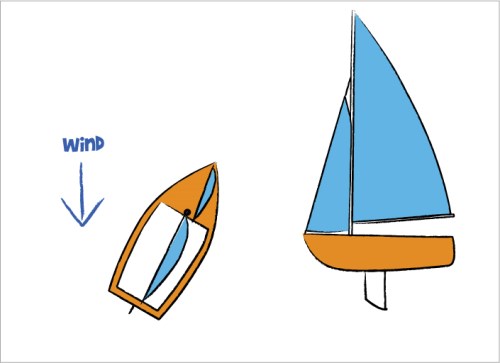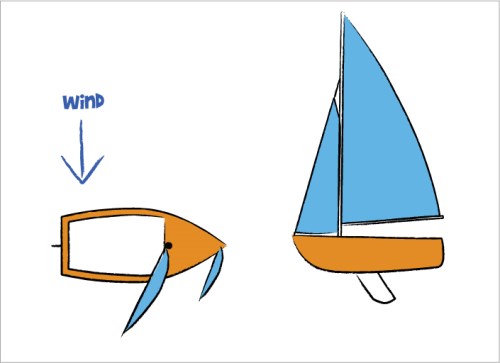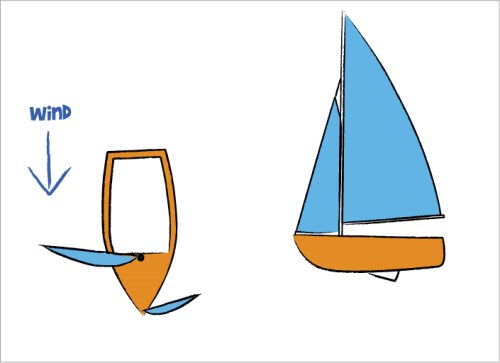Centreboard Settings
Go To: Sailing - Learn To Sail
Posted on 08 October 2007 00:00
How much centreboard should you use?
The centreboard on a boat is used to resist sideways forces of the wind trying to push the boat off course. The amount of centreboard required differs depending on the angle of the boat to the wind. Also, the centreboard acts as a pivot (turning point) around which the boat can turn, when tacking, and also helps with steering the boat.
Daggerboards perform a similar function, the difference between a daggerboard and a centreboard is that daggerboards move vertically inside their cases or slots within the boat, but centreboards rotate around a pivot point, and pivot up into the boat lengthwise.
Centreboards pivot around a fixed point within its case, up into the boat. This helps it kick back upwards into the boat if it hits anything underneath, preventing serious damage. In comparison, daggerboards on some dinghies only move vertically up and down within their casing, and while cheaper to build, are damaged more easily.
When sailing closer to the wind, if there was no resistance on the hull to the wind, the boat would be sucked sideways by the wind. The centreboard provides resistance against this pulling or sucking motion, and helps the helm maintain a relatively true course, although there will still be some drift.
However, the more centreboard that extends underneath the boat, the more the drag (resistance) is increased, which will slow the boat down; therefore, there is a compromise between amount of centreboard to slow sideways drift versus amount of drag slowing the forward speed of the boat.
When close hauled (sailing close to the edge of the wind), the centreboard or daggerboard needs to be pushed all the way down, to stop windward drift. At this point, the centreboard is also providing resistance to the heeling effect, where the boat wants to tip over away from the direction of the wind (see Diagram 1).

Diagram 1: Centreboard settings for Close Hauled
When on a beam reach, the centreboard should be half-way down, giving a balance of windward resistance to drag (see Diagram 2).

Diagram 2: Centreboard settings for sailing on a Beam Reach
On a dead run, the centreboard should be almost all the way up, with just a few inches extending through the bottom of the boat, so there is little drag (see Diagram 3). With little centreboard in use, there is no resistance to sideways motion, so there will be a rocking effect; if the boat is unbalanced, this effect amplifies, and the boat can eventually death roll if not handled properly, resulting in a death roll.

Diagram 3: Centreboard settings for sailing on a Run
Between these points of sailing mentioned, the centreboard should be adjusted accordingly. If you don’t know the Points Of Sail, read our article!